The World Through A Lens
© Nic BezzinaExploring the Central Highlands of Vietnam by motorbike by Nic Bezzina
Earlier this year in January, before travel restrictions gripped the world, I set out on my first ever trip to Vietnam. My goal was to explore the old Ho Chi Minh trail and to catch a glimpse of the region’s hill tribes. While most visitors to Vietnam travel the well-worn coastal road, I embarked on a nine-day motorcycle trek through the Central Highlands - a more demanding but arguably more rewarding way to explore the country and its cultures.
It was just me, myself and my guide and rider, Bruno.
Our journey begins (I’ve always wanted to say that) in the southern town of Dalat. Nestled in a cooler climate amidst towering pine trees, Dalat was favoured by French settlers because they could scale the steep Ngoan Muc Pass to escape the oppressive heat of Saigon. Dalat is known as ‘The City of Love,’ and is a favoured getaway for local Vietnamese and those in the know. Its evergreen forests, cascading waterfalls, beautiful lakes and the country’s largest and most startling flower farms make it a living postcard.
It was tempting, but we didn’t linger, quickly driving out of town between brimming greenhouses and arrestingly aromatic coffee plantations. In the nearby villages, every square foot of available space was being used to dry those coffee beans; heaped by the sides of roads, forming a carpet in front of homes.
Our first stop was a small-batch coffee farmer who also specialised in a more unusual type of the world’s favourite bean: Weasel coffee. Weasel coffee is an alternative name for Civet coffee. It’s brewed from partially digested coffee cherries that have been eaten and defecated by the Asian palm civet (popularly thought of as a cat, but is actually a mammal native to Southeast Asia). I was presented a freshly brewed cup of this curious new brew alongside a serving of Banh Chung, a must-have traditional food that’s a Vietnamese Lunar New Year essential. It’s a savoury cake made primarily from glutinous rice, mung beans and pork.
In the coffee farmer’s family home, there was a room adjoining the kitchen purposefully set up for distilling rice wine. I was walked through the process and later shown an assortment of jars of reptile-infused wine; large monitors, cobras and snakes of all sizes left there to steep for several months or even years while the ethanol absorbs the ‘essence’ from the animal.
Continuing on the road north we came to Lak Lake, the biggest natural lake of the Central Highland. Here, the M’nong tribe survive by fishing, growing rice and running tourist longhouses nearby. There are said to be about 31 different ethnic groups in the surrounding Dac Lac province, each with their own traditional dress and customs and some are renowned for elephant hunting and taming. The sight of mahouts (a person that works with elephants) riding these gentle giants around the lake and through the streets or swimming alongside them is incredibly striking, attracting lots of tourists. At a rustic bar by the lake we sat back, ordered beers and watched the sky turn from pink to burnt orange as the mahouts returned home with their elephants after a long day’s work offering tourists rides in and around the lake.
The next day we continued north towards the regional capital Buon Ma Thuot, stopping en route for a secluded lunch at Hồ Tắm Tiên Waterfall in Dak Nong province. It is far more intimate and less bustling than the surrounding waterfalls. The only people there were myself and Bruno, my guide. We had purchased fresh ingredients at a nearby village market, and enjoyed a rare quiet moment by a small fire with roasted chicken, mushroom and lemongrass on a bamboo spit. Tranquil and delicious.
After our detour, we motored north to Pleiku. Surrounded by rubber, coffee and pepper plantations and situated in a valley dominated by the Ham Rong (‘Dragon’s Mouth’) Mountain, Pleiku is the capital of Gia Lai province. Riding along unpaved rural roads and sharing them with villagers herding their water buffalo, we eventually stopped at a river crossing. The only way across was a small wooden platform connected to the other side by a rope. Our ferry-women pulled us and our motorbike across by hand, with farmer joining us as we watched his herd of buffalo forge across to the other side.
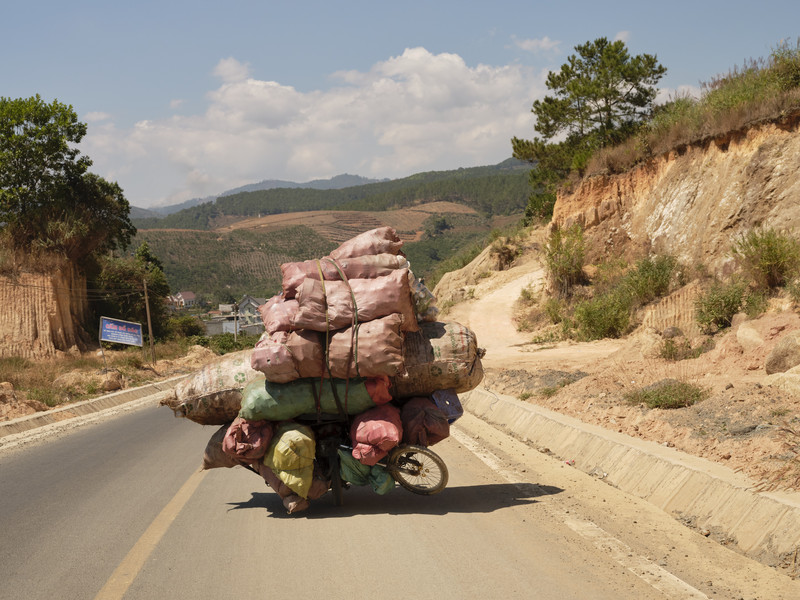

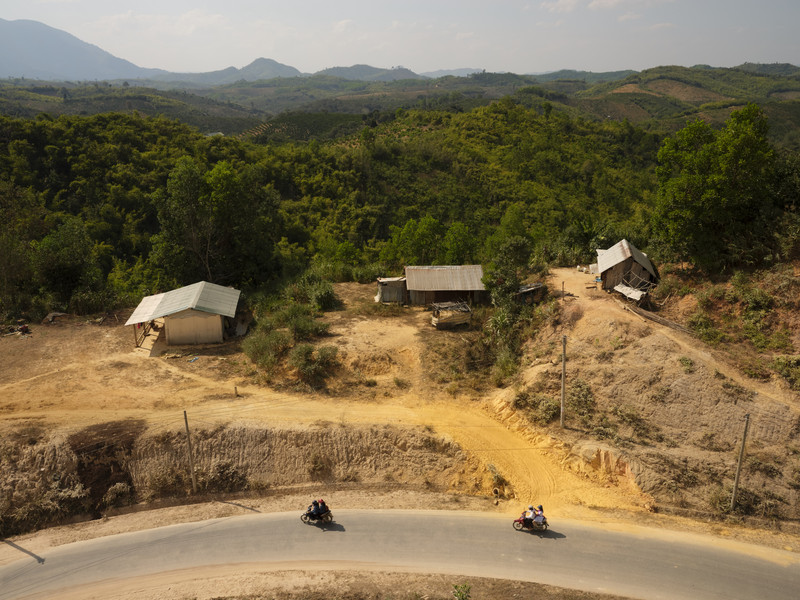
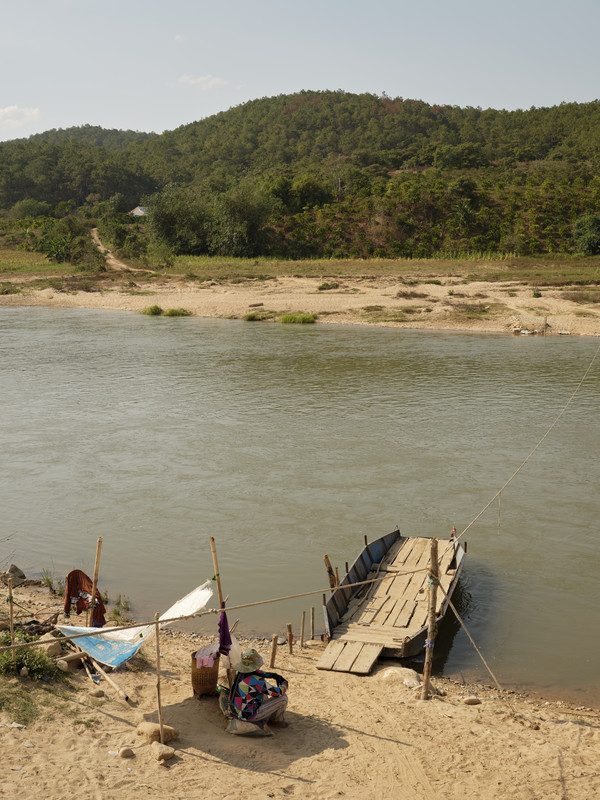
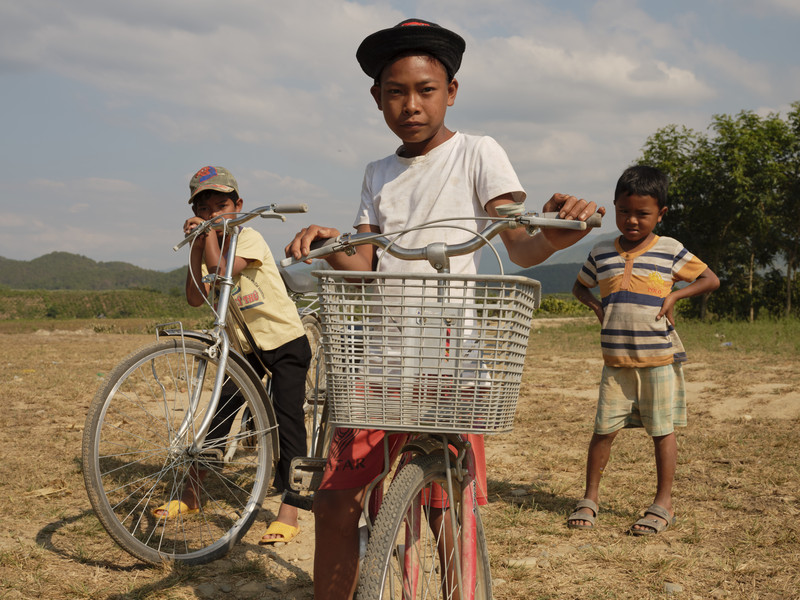
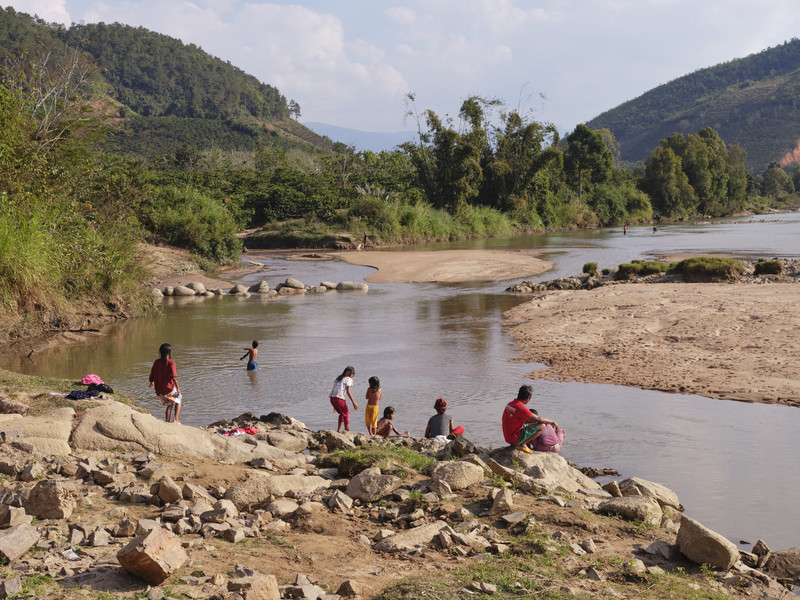


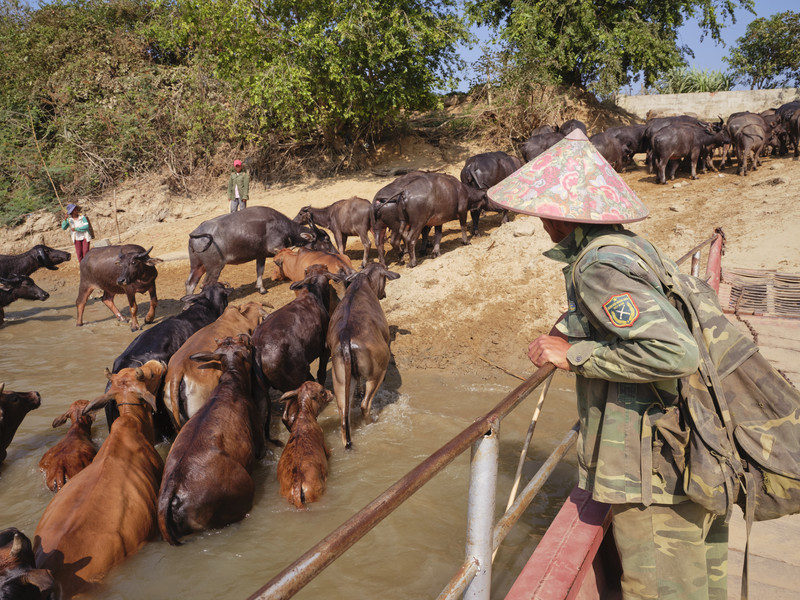

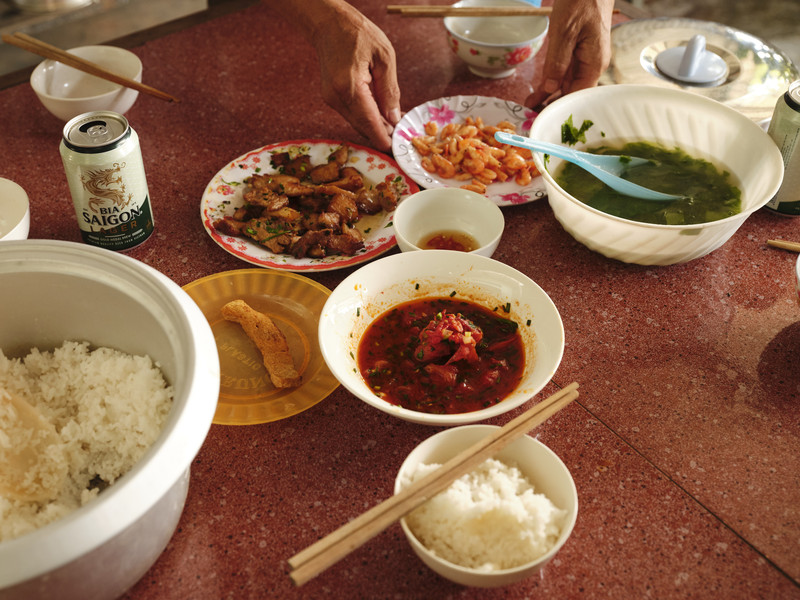
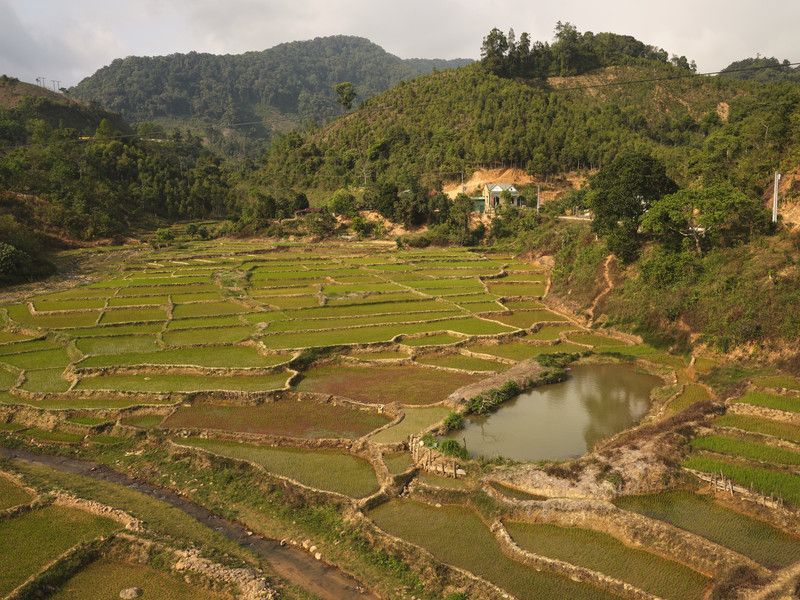
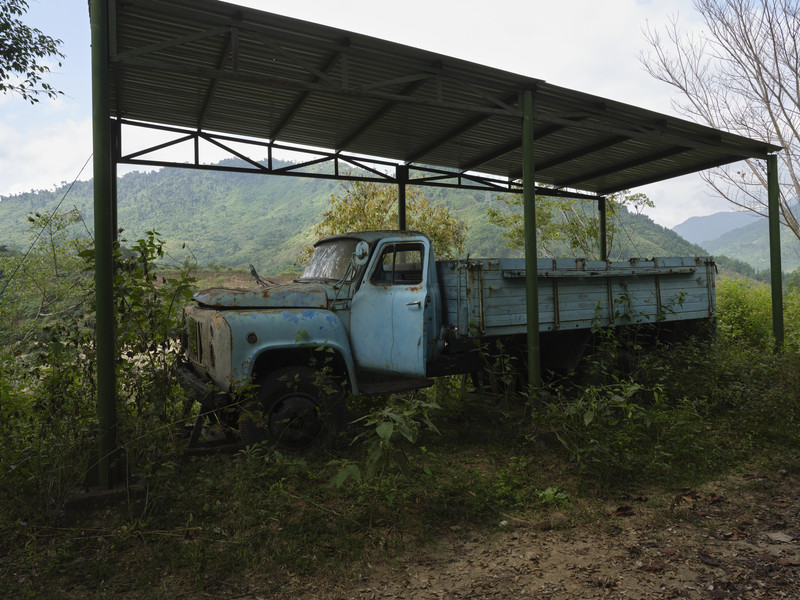
Kon Ktu village was our next stop where we met the Ede hill tribes to learn about their traditions, cultures, customs and daily life. Here, men and women are equal and life is focused on and revolves around the Rong House or ‘Tall House’, a communal wooden structure on stilts with an enormous thatched roof at the centre of the village. In this building, the village elders frequently meet to discuss matters relating to the health and wellbeing of the entire village. Next to the Rong House was a large clearing that served as a football (soccer) field where local teams were currently playing a match. Football is extremely popular among the highland citizens and not so much for its competitiveness, but for the community spirit it fosters.
The following day we took a detour to travel along the original Ho Chi Minh trail. The new Ho Chi Minh Highway was built on the old trail, but from Kon Tum to Daklak, the historic HCM trail (Highway 14C), runs parallel to Highway 14. The Ho Chi Minh Trail was once called "one of the great achievements of military engineering of the 20th century,” and for good reason: It was an integral part of the Vietnam war story, and begins near Hanoi, runs almost 1,000 miles down the length of the country and finally ends in Ho Chi Minh. Four decades later and despite the passage of countless travellers, many of these paths have barely changed. However, with increasing infrastructure developments and nature reclaiming the land, there are visible, encroaching signs that it may well disappear into legend if left unattended.
On the final leg of our journey, we pushed on north through mountainous jungle to the bustling coastal Chinese merchant town of Hoi An, we made one last stop to observe a woman hand-making rice paper in her home. After exploring and experiencing so much history with each and every step, she seemed a fitting last sight, calmly and contently embodying the spirit of what Vietnam is today: A beautiful place that was worth fighting for.
click to view the complete set of images in the archive
